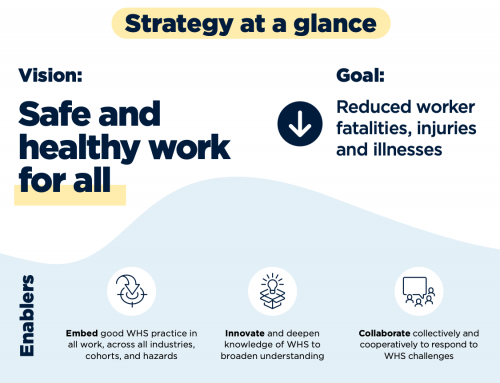A number of new changes to work health and safety in NSW have been made following the passing of the Work Health and Safety Amendment (Review) Act 2020 in June 2020.
The key aspects of the changes to the Work Health & Safety Act 2011 include:
- Enhancement of the Category 1 offence by including “gross negligence” as a fault element – To make it easier to prosecute and create a stronger incentive for duty holders to manage work health and safety risks.
- Prohibition of insurance and indemnity arrangements – To ensure people cannot avoid responsibility for paying work health and safety fines.
- Increased penalty amounts for all Work health and safety offences in line with the Consumer Price Index – To ensure penalties retain their deterrent value.
- Extension of time in which a person can ask the Work Health & Safety regulators to start a prosecution in response to a Category 1 or Category 2 offence from 12 to 18 months and addition of a requirement that the WHS regulator provide updates every three months to the requester until a decision to prosecute is made – To ensure that during investigations of workplace accidents, families are kept informed and have access to an effective review mechanism for decisions not to prosecute.
- Clarification that a Health and Safety Representative (HSR) can choose their course of training – To avoid unnecessary delays which can affect an HSR’s ability to fulfil their role and exercise their powers.
National COVID-19 safe workplace principles
Gross negligence and recklessness incorporated in changes
One of the important changes redefines the terms associated with industrial manslaughter prosecutions of recklessness and gross negligence.
The previous term used in NSW work health & safety legislation of ‘reckless” has been expanded to cover “Gross negligence or reckless”
The legislation now refers to a person who:
(i) engages in the conduct with gross negligence, or
(ii) is reckless as to the risk to an individual of death or serious injury or illness.
While the terms recklessness and gross negligence are highly complex an dlikely to form part of several arguments in courts, Queensland cases have previously found that ‘recklessly’ can mean to undertake an act while at that time being cognisant of the risks associated with that act, without the need to consciously decide to risk harm being done. (Refer Kilby v Harrison; Saxon Energy Services Australia Pty Ltd v Harrison [2019] ICQ 021)
Tottle J in the Western Australian Supreme Court case GR Engineering Services Ltd v Investment Ltd also noted that Australian courts, in considering the common law meaning of “gross negligence” should follow the approach of Mance J – Red Sea Tankers Ltd v Papachristidis (Hellespont Ardent). Where his Lordship said :
‘Gross’ negligence is clearly intended to represent something more fundamental than failure to exercise proper skill and/or care constituting negligence. But, as a matter of ordinary language and general impression, the concept of gross negligence seems to me to be capable of embracing not only conduct undertaken with actual appreciation of the risks involved, but also serious disregard of or an indifference to an obvious risk.
Mance J – Red Sea Tankers Ltd v Papachristidis (Hellespont Ardent)
What do the changes really mean for employers?
The importance of managing critical risks i.e. those risks which present imminent risk to life, serious injury or work related illnesses are managed effectively.
Organisations should consider all risks that their operations present to employees, visitors, contractors or members of the public. Those risks must be managed according the the risk profile encountered from the operations. Ultimately all ‘fatal risks’ must be managed to ensure that the organisation does not expose persons to those risks which have a fatal consequence.
If they do expose persons to fatal risks, and those risks are well known, then employers, supervisors and managers can expect that regulators will pursue legal action in the event of an incident.
The best step is identifying and managing your safety and health risks like you would your financial, environments and reputational risks.
Safetysure health and safety consultants help businesses identify and quantify risks of their operations. We work with large and small businesses to strategically manage work health and safety risks. Call us on 1300 087 888 for a no obligation free quote.
You might also like to read:
Work health and safety during a pandemic | A basic guide for Employers
Brisbane construction company fined for failure to manage critical risk






Leave A Comment